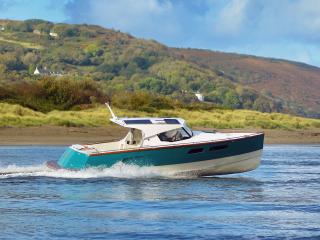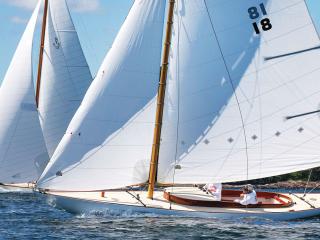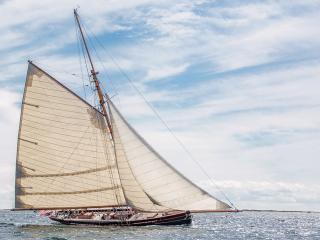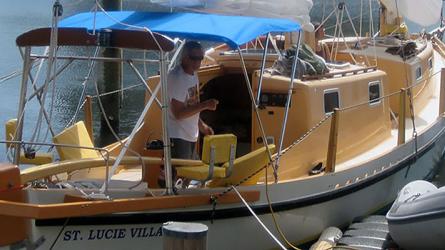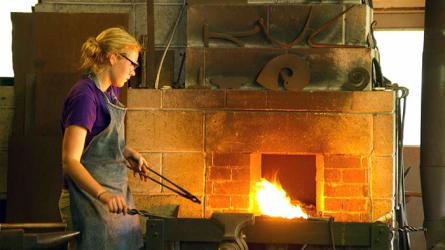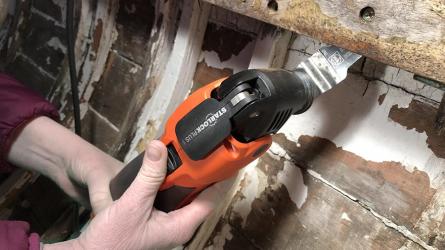July / August 2022
A Lifetime of Apprenticeship
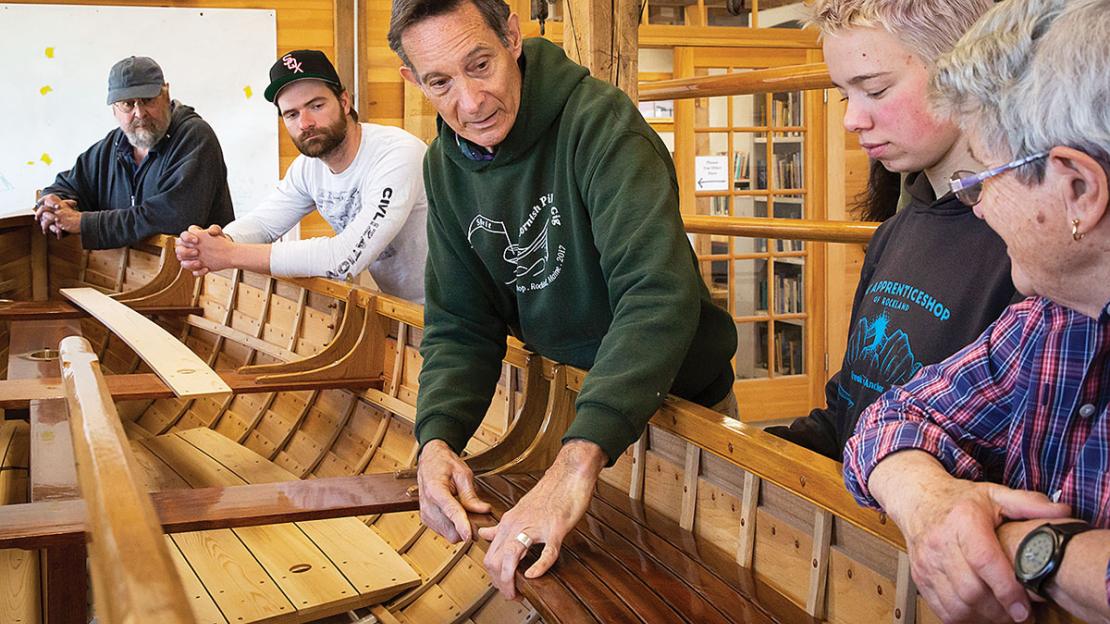
ERIN TOKARZ
Kevin Carney, himself a 1980 Apprenticeshop graduate, has been an instructor for 35 of the institution’s 50 years.
Walk through the back doorway of The Apprenticeshop in Rockland, Maine, and you are immediately confronted by a mass of sculpted mahogany tapering overhead to the fine-lined counter stern and delicate transom of an Irish racing class known as the Dublin Bay 24. Inside the hull, two apprentices are crouched in the bilges with a folding rule, a roll of string, and a 1′ spirit level working out where to punch a hole through the planking for the offset propeller shaft. This is always a complex operation, and in this case there is little in the way of guidance, save for a low-resolution CAD drawing of the engine in place. No instructor is on hand to demonstrate technique or provide advice. The apprentices are getting on with it despite a mortal fear of screwing up a really nice planking job.
Just beyond the Dublin Bay 24, which is a fine-ended 38' yacht built to a 1938 design by Alfred Mylne, other apprentices are pouring hot pitch into the bilge cavities of a nearly completed lobsterboat. The faired hull is sharp and sleek, with white primer on the topsides and dark green antifouling paint below the waterline. A well-used roll of plans on the workbench states that this is a “26' Cliffy Boat, as used in lobester [sic] fishery, southern end of Matinic [sic] Isl, ME Late 1930s through 1950s.” Clifford Winchenbach, builder of the original Cliffy boat, was knocking together reverse-raked transoms well before they appeared in the AMERICA’s Cup contenders of the 1950s, and this one suggests that no improvements have been made since that time. A high-powered fan set up on the foredeck and an air-filtration unit mounted directly above the boat are running on their highest settings, though neither seems to be making much of a difference to the acrid, oily haze rolling off the freshly poured pitch.
To read the rest of this article:
Click the button below to log into your Digital Issue Access account.
No digital access? Subscribe or upgrade to a WoodenBoat Digital Subscription and finish reading this article as well as every article we have published for the past 50-years.
ACCESS TO EXPERIENCE
Subscribe Today
1 YEAR SUBSCRIPTION (6 ISSUES)
PLUS ACCESS TO MORE THAN 300 DIGITAL BACK ISSUES
DIGITAL $29.00
PRINT+DIGITAL $42.95
Subscribe
To read articles from previous issues, you can purchase the issue at The WoodenBoat Store link below.
 Purchase this issue from
Purchase this issue from
